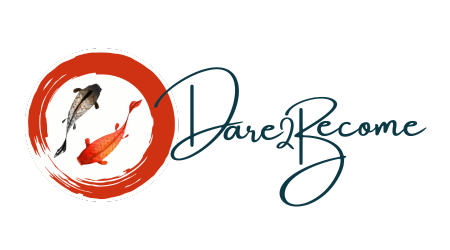
Cold Water Therapy - Are you Curious?
Share
The Comprehensive Guide to Cold Water Therapy: Unveiling the Science and Benefits.
Cold water therapy, often seen as a daunting challenge, has been gaining traction for its myriad of health benefits. While the idea of submerging oneself in icy water might send shivers down your spine, the science-backed advantages are too compelling to ignore. In this guide, we'll delve deep into the world of cold water therapy, answering the most searched questions on Google and presenting clinical evidence to support our claims.
What is Cold Water Therapy?
Cold water therapy, also known as cold hydrotherapy, is the act of immersing the body in cold or icy water. Historically favoured by athletes for post-workout recovery, its popularity has surged among the general populace, thanks to people like Wim Hof and his scientifically proven method. The therapy can be categorised into several methods:- Cold Showers: A beginner-friendly introduction, cold showers can offer emotional and physical health benefits. However, they can't match the intensity of an ice bath.
- Cold Water Immersion: This involves sitting in cold water, typically between 10ºC/16ºC, for short durations.
- Ice Baths: A more intense version, where one immerses in icy water, demanding acclimatization over time.
- Cryotherapy: A modern approach, exposing the body to extreme cold for brief moments, primarily for athletic recovery.
Building Resilience to Stress with the Wim Hof Method
The modern world is rife with stressors, from work pressures to personal challenges. Resilience, the ability to bounce back from adversity, is more crucial than ever. The Wim Hof Method, through cold exposure, offers a unique pathway to bolstering this resilience.
Cold Exposure: A Stressor by Choice
At first glance, willingly subjecting oneself to the discomfort of cold might seem counterintuitive. However, this voluntary stressor is at the heart of the method's effectiveness. By choosing to face the cold, you're training your mind and body to handle stress on your terms. Over time, this repeated exposure helps in building a mental fortitude that translates to other areas of life.
The Science of Stress and Cold Exposure
When you step into cold water, your body's initial response is a stress reaction. The heart rate increases, breathing becomes rapid, and there's a surge in cortisol, the body's primary stress hormone. However, with regular practice as advocated by the Wim Hof Method:
- Controlled Response: You learn to control this reaction, slowing down your breathing and calming your mind. This controlled response to stress can be applied to other stressful situations, allowing for a more measured reaction to challenges.
- Neurological Benefits: Cold exposure stimulates the vagus nerve, a critical component of the body's parasympathetic nervous system. Activation of this nerve promotes relaxation and calmness, counteracting the body's stress response.
- Endorphin Release: The cold triggers the release of endorphins, the body's natural painkillers and mood enhancers. These chemicals can combat the negative effects of stress, leading to a more positive outlook.
Translating Cold Resilience to Life Resilience
The resilience built through cold exposure isn't just about withstanding chilly temperatures. It's about developing a mindset. By repeatedly facing and overcoming the challenge of the cold, you're reinforcing the belief that you can handle adversity. This belief, grounded in real experience, becomes a powerful tool in facing life's various stressors.
More Scientifically Proven Benefits of the Wim Hof Method
- Boosting the Immune System: A study conducted on Wim Hof Method practitioners found they could control their autonomic nervous system and immune response, previously thought impossible. This was evident when they were injected with an endotoxin and exhibited fewer symptoms than the control group.
- Brown Fat Activation: Cold exposure stimulates brown adipose tissue (brown fat), which generates heat. This not only helps in cold resistance but also has potential metabolic benefits, including enhanced calorie burning.
- Mental Health Benefits: Cold exposure releases endorphins, the body's natural mood elevators. This can lead to reduced symptoms of stress and depression, making it a potential natural remedy for mental health issues.
- Improved Circulation: The cold stimulates vasoconstriction, narrowing blood vessels. When followed by vasodilation (widening of blood vessels), it can enhance blood flow, benefiting cardiovascular health.
Other Science-Backed Benefits of Cold Water Therapy
- Reduced Pain & Inflammation: A study from Hong Kong demonstrated that cold water immersion post-exercise reduced pain and inflammation for up to 24 hours. Additionally, other research indicates potential benefits for chronic pain conditions like rheumatism and fibromyalgia.
- Increased Metabolic Output: A 2014 study from the Netherlands revealed that regular cold exposure can induce thermogenesis, potentially boosting metabolism and aiding weight loss.
- Heightened Immune Response: A 2019 study from the Netherlands combined cold exposure with breathing exercises, resulting in an enhanced immune response, suggesting potential resilience against physiological stress.
Answering the Most Searched Questions on Google
- How long should you stay in cold water for therapy?: For beginners, it's recommended to start with short durations, typically less than 2 minutes, and gradually increase as one becomes acclimatised.
- What happens after 30 days of cold showers?: Read the list of proven benefits above. After 30 days you will have formed a great resilience and mental fortitude as well.
- What does a 5-minute cold shower do?: Read the scientifically proven benefits listed above. You are aiming for around 11 minutes total time each we for optimal benefits.
- What does cold water therapy do to the brain?: Cold exposure can release endorphins, the body's natural painkillers, leading to mood elevation.
- Can you do too much cold therapy?: Like any therapy, moderation is key. Overexposure can lead to hypothermia or frostbite. Listen to your body and build up your exposure gradually.
- Is a cold shower as good as an ice bath?: While both have benefits, ice baths offer a more intense exposure, potentially leading to more pronounced benefits., especially if mental fortitude and stress resilience are your goals
- Why is cold therapy good for the vagus nerve?: Cold exposure can stimulate the vagus nerve, potentially leading to reduced stress and inflammation.
Conclusion
Cold water therapy, with its roots in ancient practices, has found its way into modern wellness routines, promoted by Wim Hof and others, backed by science and testimonials alike. Whatever you desired outcome, if you are looking for holistic well-being method to boost your physical and mental health, cold water therapy offers a refreshing plunge into a world of health benefits.
Always consult with a healthcare professional before starting.
I would always recommend attending a Wim Hof Method Fundamentals Workshop first, before you try this on your own. Be guided by a trained and certified instructor, and remember, every drop of cold water is a step towards a healthier you.
Take care,
Andy
